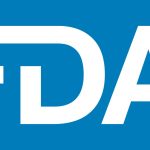At the Camstar 2014 Global Conference, I moderated a panel entitled “Outlook for the Medical Device Industry 2014 and Beyond: Advice from Proactive Leaders.” The following Executives provided their prognosis for the Med-Tech Industry: Mark Lincoln, VP Global Operations, Terumo Cardiovascular Group; Jim Robinson, VP Operations, Advanced Bionics; and Matt Scott, Senior VP of Operations, ConforMIS.
In this, the third and final in our series of articles, we share insights and perspective from these executives addressing Technology issues impacting the future of the Med Tech industry. (Read the first and second articles here).
Q: What changes should manufactures be expecting from the FDA? How is your company preparing for those changes?
Matt Scott: UDI (unique device identifier) implementation will change the way we all document and track our implants and instruments. Infrastructure and systems have to be implemented that meet the FDA requirements that many manufacturers don’t have access to today.
Software validations and audits of submissions are increasing the complexity of the value chain. It is no longer just equipment validations that prove to be the most time consuming and complex, but now software is a large driver to the regulatory landscape.
Jim Robinson: FDA is starting to push up the Supply Chain and look at Suppliers more often and how their Quality Systems are compliant and consistent with the type of work they do.
The other area the FDA is focusing on is changing the conversation from just compliance to compliance and quality. They are giving more attention to how a company truly establishes and maintains quality within their organization.
Mark Lincoln: I believe the expectations of FDA are increasing and they are adding more pressure to manufacturers. Not that it is unfair, but I can almost guarantee that your next inspection will be harder than the last one you went through. They are starting to look more at product quality and performing risk-based inspections based on the data than they have through MDR’s, complaints, and CAPA.
Electronic audits are also becoming a reality. To have the device history record on line and available we have found to be a powerful tool with on site audits. It has made data retrieval, review and traceability very easy for both sides.
Q: We’d love to get a look at the future of MES in the medical device industry. What we can expect to see in the industry over the next 5 years?
Matt Scott: MES will need to become integrated with CRM tools such as salesforce.com to manage the full chain of events.
Jim Robinson: I believe some companies have done a great job of integrating MES into many aspects of the Manufacturing Plant (Maintenance, Training, Environmental Controls, Material Handling, and more). This level of integration will continue.
Integration with suppliers and potentially customers would be the next logical expansion.
Mark Lincoln: As organizations expand their presence around the globe, there will be additional challenges that come along with that. Decentralized systems will be the biggest challenge, especially if the growth comes from acquisitions or partnerships.
Where I would love to be in the future is to have full and complete visibility of our products and processes from raw material through end of life service. Imagine a system that allows you to have visibility into manufacturing for the product’s life. One comprehensive DHR for each product could be a powerful tool to driving quality higher and higher while easily identifying areas to drive cost out of the process. I’m not just talking manufacturing but inventory visibility as well. There is still so much fat in the entire medical device supply chain, we have an unbelievable opportunity in the next 5-10 years to take advantage of the technology that is coming our way.
In summary, there is agreement that with the advances in technology, FDA has higher expectations from manufacturers as data is more readily available. According to the panelists, the integration of other technologies into a comprehensive MES system will drive costs down and quality up. The timeline for this goal is a moving target.





